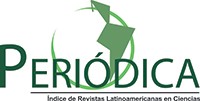Nueva variante patogénica en el gen SOX9 relacionada con la displasia campomélica
DOI:
https://doi.org/10.62430/rtb20242221785Keywords:
Campomelic displasia , chondrogenesis, missense mutation , Pierre Robin síndrome, SOX9 transcription factorAbstract
Campomelic dysplasia is a skeletal dysplasia, characterized by the Pierre Robin sequence with cleft palate, associated with bowing and shortening of the long bones. This research aimed to report a variant with a missense change in the SOX9 gene that was previously described as uncertain meaning, in an infant with clinical-radiological characteristics for campomelic dysplasia. Male patient seven days old, what was evaluated by clinical genetics, who presented the physical examination Robin sequence with cleft soft palate, lower extremities with dimpled skin over curved long bones, with brachydactyly and equinovarus feet. The radiographs showed a narrow chest with 11 pairs of ribs, hypoplasia of the scapulae, non-mineralized hypoplastic pedicles of the thoracic vertebrae, anterolateral bowing (at the junction of the proximal 1/3 and the distal 2/3) in the femurs, tibias with slight anterior arching. The bones of the upper extremities are not arched. Given this circumstancencia proposes sequencing study, whole exome tha identiphies in heterozygosity the missense type variant in exon 1 of the SOX9 gene (NM_000346.4), c.347C>T, p.(Ala116Val), which is related to campomelic dysplasia; while the cariotypewas46, XY. At control, at five months old in the patient persist onto anthropometry below the third percentile according to WHO growth curves, and with he antecedent of two respiratory conditions. The identified variant could to be considered pathogenic, since the infant presented mostly meets the clinical-radiological criterio described for the campomelic dysplasia.
Downloads
References
Benko S, Fantes JA, Amiel J, Kleinian DJ, Thomas S, & Ramsay J. (2009). Highly conserved non-coding elements on either side of SOX9 associated with Pierre Robin sequence. Nature Genetics, 41(3), 359-364. https://doi.org/10.1038/ng.329
Bonafe L, Cormier-Daire V, Hall C, Lachman R, & et al. (2015). Nosology and classification of genetic skeletal disorders: 2015 revision. Am J Med Genet, 167, 2869-2892. https://doi.org/10.1002/ajmg.a.37365
Calvache CA, Vásquez EC, Romero VI, Hosomichi K, & JC, P. (2022). Novel SRY-box transcription factor 9 variant in campomelic dysplasia and the location of missense and nonsense variants along the protein domains: A case report. Front Pediatr 10:975947, 1-10. https://doi.org/10.3389/fped.2022.975947
Csukasi F, Duran I, Zhang W, Martin JH, Barad M, Bamshad M, & al, e. (2019). Dominant-negative SOX9 mutations in campomelic dysplasia. Hum Mutat, 40(12), 2344–2352. https://doi.org/10.1002/humu.23888.
Foster JW, Dominguez-Steglich MA, Guioli S, Kowk G, Weller PA, Stevanovic M, & et al. (1994). Campomelic dysplasia and autosomal sex reversal caused by mutations in an SRY-related gene. Nature, 372, 525–530.
Friedrich U, Schaefer E, & Meinecke P. (1992). Campomelic dysplasia without overt campomelia. Clin. Dysmorphol, 1, 172-178.
Gentilin B, Forzano F, Bedeschi MF, Rizzuti T, Faravelli F, Izzi C, & et al. (2010). Phenotype of five cases of prenatally diagnosed campomelic dysplasia harboring novel mutations of the SOX9 gene. Ultrasound Obstet Gynecol, 36, 315–323. https://doi.org/10.1002/uog.7761
Geraldo MT, Valente GT, Nakajima RT, & C, M. (2016). Dimerization and transactivation domains as candidates for functional modulation and diversity of Sox9. PLos One, 11(5), e0156199. https://doi.org/10.1371/journal.pone.0156199
Glass RBJ, & Rosenbaum KN. (1997). Acampomelic campomelic dysplasia: Further radiographic variations. Am J Med Genet, 69, 29–32.
Hall BD, & Spranger JW. (1980). Camptomelic dysplasia: Further elucidation of a distinct entity. Am J Dis Child, 134, 285–289.
Houston CS, Opitz JM, Spranger JW, Macpherson RI, Reed MHGilbert EF, Herrmann J, & et al. (1983). The campomelic syndrome: review, report of 17 cases, and follow-up on the currently 17-year old boy first reported by Maroteaux et al in 1971. Am J Med Genet, 15(1), 3-28.
Jain V, & Sen B. (2014). Campomelic dysplasia. J Pediatr Orthop B, 23(5), 485–488. https://doi.org/10.1097/BPB.0000000000000058.
Karaer K, Yüksel Z, Yalınbaş E, & Scherer G. (2014). A case of campomelic dysplasia in whom a new mutation was found in the SOX9 gene. Turkish Pediatric Association, 49, 154-156. https://doi.org/10.5152/tpa.2014.1187
Khajavi A, Lachman R, Rimoin D, & al, e. (1976). Heterogeneity in the campomelic syndrome: Long and short-bone varieties. . Radiology 120, 641–647, .
Lecointre C, Pichon O, Hamel A, Heloury Y, Michel-Calemard L, & Morel Y. (2009). Familial acampomelic form of campomelic dysplasia caused by a 960 kb deletion upstream of SOX9. Am J Med Genet, Part A 149A:, 1183–1189. https://doi.org/10.1002/ajmg.a.32830
Lefebvre V, & Dvir-Ginzberg M. (2017). SOX9 And the many facets of its regulation in the chondrocyte lineage. Connect Tissue Res, 58(1), 2-14. https://doi.org/ 10.1080/03008207.2016.1183667.
Leipoldt M, Erdel M, Bien-Willner GA, Smyk M, Theurl M, Yatsenko SA, & et al. (2007). Two novel translocation breakpoints upstream of SOX9 define borders of the proximal and distal breakpoint cluster region in campomelic dysplasia. Clin Genet, 71, 67–75. https://doi.org/10.1111/j.1399-0004.2007.00736.x
Mansour S, Offiah AC, MwDowall S, Sim P, Tolmie J, & Hall C. (2002). The phenotype of survivors of campomelic dysplasia. J. Med. Genet, 39, 597–602.
Maroteaux P, Spranger J, Opitz JM, Kucera J, Lowry RB, Schimke RN, & SM, K. (1971). Le syndrome campomélique. Presse Med, 79(25), 1157-1162.
Meyer J, Südbeck P, Held M, Wagner T, Schmitz ML, Bricarelli FD, & et al. (1997). Mutational analysis of the SOX9 gene in campomelic dysplasia and autosomal sex reversal: lack of genotype/phenotype correlations. Human Molecular Genetics, 6(1), 91-98.
Olney PN, Kean LS, Graham D, Elsas LJ, & May KM. (1999). Campomelic syndrome and deletion of SOX9. Am J Med Genet, 84, 20–24.
Preiss S, Argentaro A, Clayton A, John A, Jans D, Ogata T, & et al. (2001). Compound effects of point mutations causing campomelic dysplasia/autosomal sex reversal upon SOX9 structure, nuclear transport, DNA binding, and transcriptional activation The Journal of Biological Chemistry, 276(30), 27864-27872. https://doi.org/10.1074/jbc.M101278200
Sock E, Pagon R, Keymolen K, Lissens W, Wegner M, & Scherer G. (2003). Loss of DNA-dependent dimerization of the transcription factor SOX9 as a cause for campomelic dysplasia. Human Molecular Genetics, 12(12), 1439-1447. https://doi.org/10.1093/hmg/ddg158
Spranger JW, Brill PW, Hall C, Nishimura Gen, Superti-Furga Andrea, & Sheila, U. (2018). Bone Dysplasias. An Atlas of Genetic Disorders of Skeletal Development (4 ed.). OXFORD University Press.
Staffler A, Hammel M, Wahlbuhl M, Bidlingmaier C, Flemmer A, Pagel P, & et al. (2010). Heterozygous SOX9 mutations allowing for residual DNA-binding and transcriptional activation lead to the acampomelic variant of campomelic dysplasia Human Mutation, 31, 1436-1444.
Thomas S, Winter RB, & Lonstein JE. (1997). The treatment of progressive kyphoscoliosis in camptomelic dysplasia. Spine, 22, 1330–1337.
Unger S, Scherer G, & Superti-Furga A. (2008, citado 2024 april 27). Campomelic Dysplasia. Online Mendelian Inheritance in Man. www.ncbi.nlm.nih.gov/books/
Published
How to Cite
Issue
Section
License

This work is licensed under a Creative Commons Attribution-NonCommercial-NoDerivatives 4.0 International License.
Objeto: El AUTOR-CEDENTE transfiere de manera TOTAL Y SIN LIMITACIÓN alguna al CESIONARIO (Revista The Biologist (Lima)) los derechos patrimoniales que le corresponden sobre sus obras por el tiempo que establezca la ley internacional. En virtud de lo anterior, se entiende que el CESIONARIO adquiere el derecho de reproducción en todas sus modalidades, incluso para inclusión audiovisual; el derecho de transformación o adaptación, comunicación pública, traducción, distribución y, en general, cualquier tipo de explotación que de las obras se pueda realizar por cualquier medio conocido o por conocer en el territorio nacional o internacional.
Remuneración: La cesión de los derechos patrimoniales de autor que mediante este contrato se hace será a título gratuito.
Condiciones y legitimidad de los derechos: El AUTOR-CEDENTE garantiza que es propietario integral de los derechos de explotación de la(s) obra(s) y en consecuencia garantiza que puede contratar y transferir los derechos aquí cedidos sin ningún tipo de limitación por no tener ningún tipo de gravamen, limitación o disposición. En todo caso, responderá por cualquier reclamo que en materia de derecho de autor se pueda presentar, exonerando de cualquier responsabilidad al CESIONARIO.
Licencia de acceso abierto: El AUTOR-CEDENTE autoriza que manuscrito publicado en la Revista Científica The Biologist (Lima) (versión Impresa ISSN 1816-0719, versión en línea ISSN 1994-9073) permanece disponible para su consulta pública en el sitio web http://revistas.unfv.edu.pe/index.php/rtb/index y en los diferentes sistemas de indexación y bases de datos en las que la revista tiene visibilidad, bajo la licencia Creative Commons, en la modalidad Reconocimiento-No comercial- Sin Trabajos derivados –aprobada en Perú, y por lo tanto son de acceso abierto. De ahí que los autores dan, sin derecho a retribución económica, a la Escuela Profesional de Biología, Facultad de Ciencias Naturales y Matemática de la Universidad Nacional Federico Villarreal (EPB - FCCNM - UNFV), los derechos de autor para la edición y reproducción a través de diferentes medios de difusión.









































